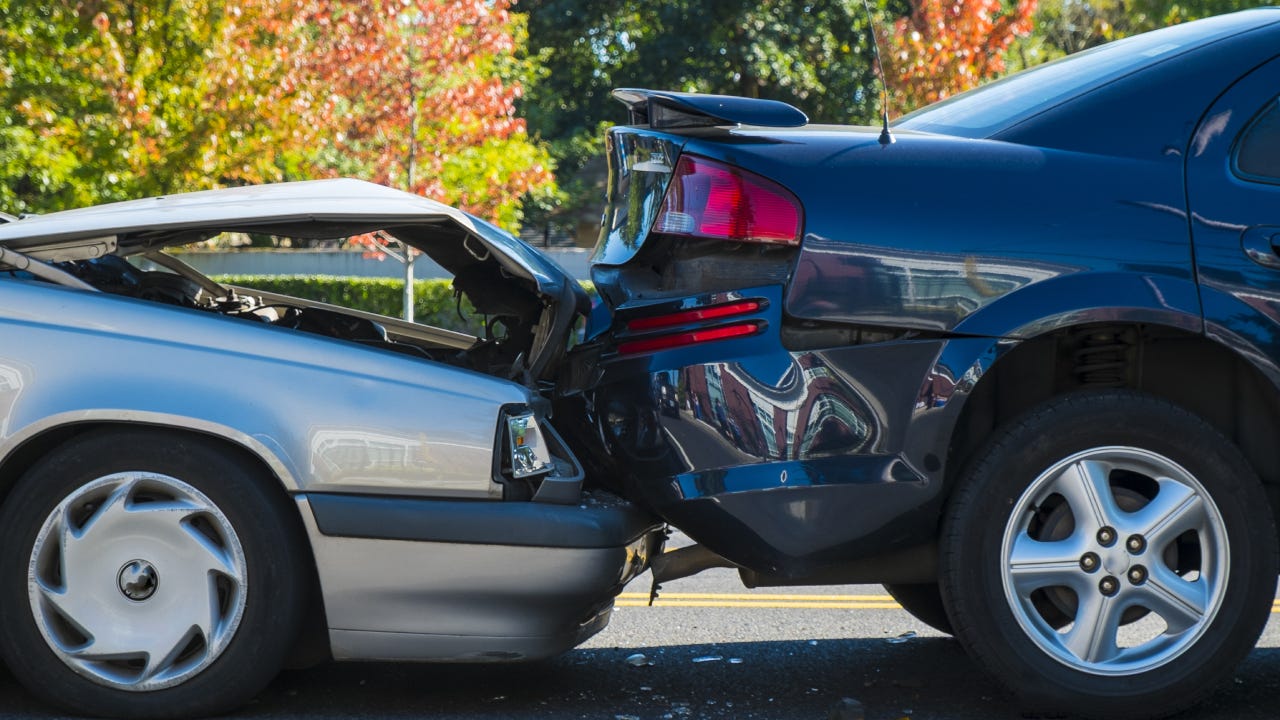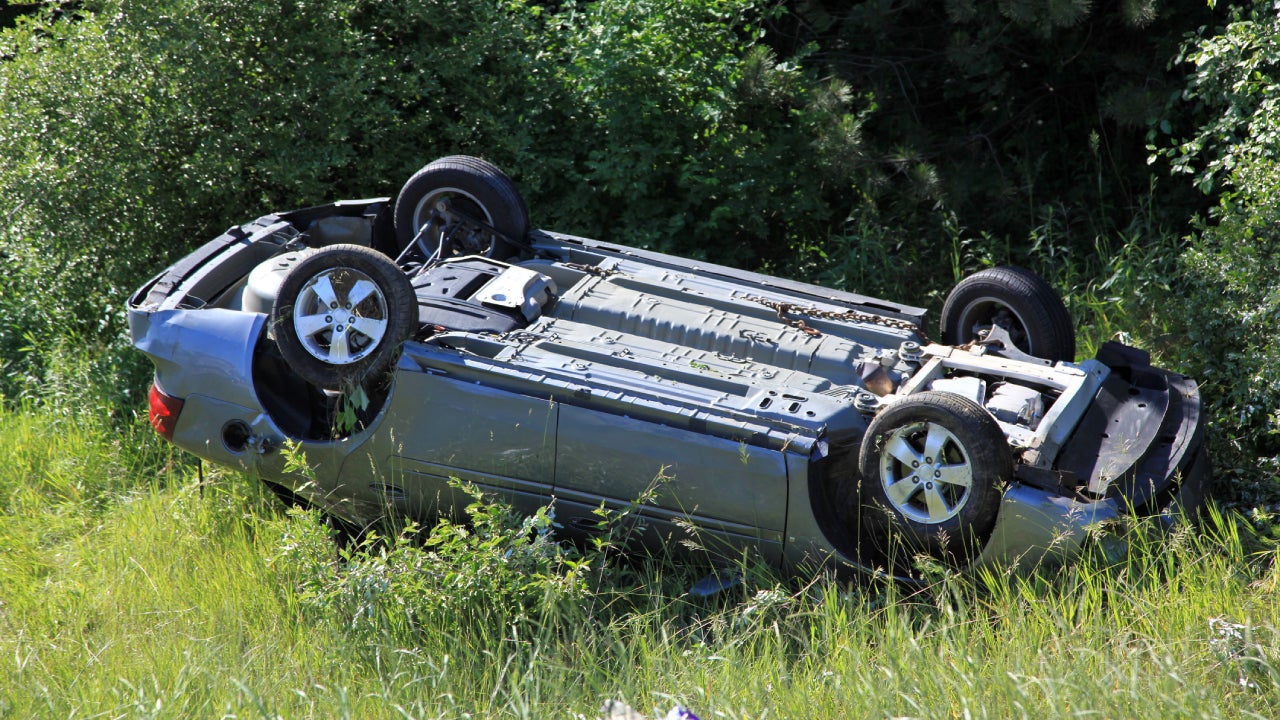How does auto liability work?




Auto liability insurance covers the costs related to other parties’ damage and injuries when you’re found at fault in a car accident. Most states require drivers to carry at least a minimum amount of liability coverage.
Liability insurance has limits that are set when you purchase a policy and represent the maximum amount of money an insurance provider will pay in a covered accident. If your costs exceed the limits, you may need to pay out of pocket for additional expenses.
Key takeaways
- Liability coverage is a standard part of state minimum coverage requirements.
- Your auto liability pays for the other driver’s injuries and vehicle repairs if you are at fault for an accident.
- Your auto liability does not cover your injuries and repairs; it pays the “other” person in the accident.
How much auto liability coverage do you need?
You will have to buy at least your state’s minimum liability limits to drive legally in most states, but is that enough? Although lower limits generally mean a lower premium, purchasing state minimum limits can leave you more financially exposed. If you cause an accident, your insurance will only pay up to your policy amounts. Lower limits can be exhausted quickly, potentially leaving you with significant out-of-pocket costs.
Thankfully, it doesn’t cost much to buy more liability coverage from insurance carriers, according to Bankrate’s analysis of different liability limits and their impact on auto premiums. The table below shows the average cost to purchase liability coverage in excess of state minimum amounts. The liability level is presented in three numbers, separated by a slash. These numbers, in thousands, are the amount of coverage for:
bodily injury per person / bodily injury per accident / property damage
You can see the premium difference for buying different levels of liability coverage. Each of the premiums below is for a full coverage policy with $500 in comprehensive and collision deductibles.
| Liability limits | Avg. annual full coverage cost | Avg. monthly cost |
| 25/50/25 | $2,464 | $205 |
| 50/100/50 | $2,548 | $212 |
| 100/300/50 | $2,670 | $223 |
| 250/500/100 | $2,836 | $236 |
Rates include bodily injury liability per person and per accident, and property damage liability, respectively. PIP and uninsured/underinsured motorist coverage are applied for states that require them.
Although higher limits do cost more, you get much more financial protection by reducing your risk of paying out-of-pocket expenses from an at-fault accident. Buying liability coverage is a bit of a balancing act. You need to ensure you stay within your budget so that you don’t stress your monthly finances, but you want to feel comfortable with your coverage level if you cause an accident. If you aren’t sure how much coverage to purchase, you may want to get quotes for a few different levels and discuss your options with a licensed insurance agent.
What damage does auto liability insurance cover?
By nature of accidents, you probably don’t ever intend to cause one. But car accidents happen, and when they do, you want to know that your finances are protected. Even minor accidents can lead to hundreds or thousands of dollars in repair bills, and medical expenses can add up even faster. Liability insurance can help protect you from financial devastation by preventing steep out-of-pocket bills.
Liability coverage types
Liability coverage has a few parts. Bodily injury liability pays for the injuries that you cause to the other party and is usually broken into two portions, “per person” and “per accident.” The per person portion pays up to your coverage amount for injuries you cause to each person in an accident, excluding passengers in your vehicle, and the per accident portion sets a cap on the total amount that your insurance will pay for medical expenses. Liability coverage also includes property damage liability, which pays for the damages you cause to the other party’s vehicle, as well as for damage you cause to items like fences, buildings and personal property.
Let’s say you get into an accident and you’re found at fault. The other driver’s injuries resulted in medical bills and time away from work. The bodily injury liability part of your policy would pay for the other driver’s expenses, up to your policy limits. If their expenses are higher than your bodily injury liability limit, you will need to pay the rest out of pocket. Or, if the other driver was at fault and you were injured, the other driver’s policy would pay for your medical bills and other related expenses (up to their policy limits).
Property damage liability pays for other people’s vehicle repairs and other property if you were at fault for an accident. If you caused an accident and damaged your neighbor’s car and broke part of their fence, the property damage liability portion of your car insurance would pay for those repairs.
Uninsured and underinsured motorist coverage
Keep in mind that liability coverage only pays for the other party’s damages, not your own. The uninsured motorist coverage and underinsured motorist coverage options are structured similarly to liability, but pay for your damages if someone hits you and doesn’t have any insurance or enough insurance to cover your expenses. Essentially, you are purchasing coverage to account for the financial gap that would apply in the event another driver fails to do so. In some states, one or both of these coverage types is required. The Insurance Information Institute estimates that around 14 percent drivers in the U.S. do not have car insurance.
You get into an accident, but it was the other driver’s fault and they don’t have insurance. Instead of filing a claim against the liability portion of their policy, you would recoup your injury and property damage expenses from your own insurance company. The same goes if the other driver’s liability limits are too low to cover the full cost of your medical or property damage expenses. In that case, you would also file a claim with your own policy for the outstanding damages.
What does liability insurance not cover?
Liability insurance only helps with the damage you cause — to another person or to their property — after an accident. Liability insurance does not provide financial protection for your vehicle repairs or medical expenses. To be covered for those expenses, you would need a full coverage car insurance policy. Most commonly, this means that you carry at least your state’s minimum liability insurance requirements plus comprehensive and collision coverage. You may also choose to add additional coverage types to your policy for more robust protection.
How does auto liability work in no-fault states?
Contrary to the name, there is still fault in no-fault states. To understand how and why, we need to talk a bit about how no-fault insurance works.
No-fault states typically require drivers to carry personal injury protection (PIP). PIP primarily covers medical expenses for you and your passengers and pays regardless of fault. It also covers lost wages and the cost of household expenses if you can’t perform them due to an injury sustained in a car accident. PIP does not cover property damage, which is where some confusion happens. Even in no-fault states, at-fault parties are still responsible for the property damage they cause.
Additionally, even though PIP is the first coverage to pay for your injuries, that doesn’t mean that fault won’t be determined. Most no-fault states still require drivers to carry bodily injury liability. Once fault is determined, the at-fault party’s bodily injury liability coverage could begin to pay for your injuries, even though PIP paid first.
These 12 states currently have no-fault laws in place:
- Florida
- Hawaii
- Kansas
- Kentucky
- Massachusetts
- Michigan
- Minnesota
- New Jersey
- New York
- North Dakota
- Pennsylvania
- Utah
MedPay is available in most, but not all, states. It covers your and your passengers’ medical expenses, similar to PIP. However, PIP tends to have higher limits and cover more things, like lost wages if you’re unable to work after a car accident.
Other factors to consider when purchasing auto insurance
Although your liability level makes up a significant portion of your auto insurance premium, it isn’t the only factor to think about. If you choose full coverage, your deductible level will also impact how much you pay for coverage. If you have a loan on your vehicle, you’ll likely be required to carry full coverage. And if you lease your car, you may even have to purchase a certain amount of liability coverage — often 100/300/50 — as part of the lease agreement.
According to Bankrate Insurance Analyst Shannon Martin, it helps to consider where you live and typically drive when deciding what coverage limits to carry on your auto policy.
"While $25k is a common property damage coverage limit, it's relatively cheap to increase this coverage up to $50k or $100k. If you live in or tend to drive through neighborhoods where luxury vehicles are the norm, it may be worth getting a quote to bump up your coverage limit."— Shannon Martin, Bankrate Insurance Analyst
Your coverage levels may also depend on the values of your assets. Generally, the more wealth you have to protect, the more coverage you are likely to need. Even without significant wealth to protect, your liability coverage can help you avoid financial ruin if you cause an accident. Purchasing appropriate coverage limits could help you manage your budget and your overall financial health.
Finally, you may want to change your liability limits when you experience life events, like adding a teenage driver to your policy or buying a home. For example, because teen drivers are statistically more likely to get into more accidents, having higher liability limits could protect you from out-of-pocket costs if your teen causes an accident. Owning a home means you have more assets to protect. When you experience events that change your life, talking with an insurance agent about potential changes to your policy might be wise.
Frequently asked questions
Methodology
Bankrate utilizes Quadrant Information Services to analyze February 2025 rates for all ZIP codes and carriers in all 50 states and Washington, D.C. Rates are weighted based on the population density in each geographic region. Quoted rates are based on a single, 40-year-old male and female driver with a clean driving record, good credit and the following full coverage limits:
- Bodily injury liability per person: $25,000, $50,000, $100,000, $250,000
- Bodily injury liability per accident: $50,000, $100,000, $300,000, $500,000
- Property damage liability per accident: $25,000, $50,000, $100,000
- $100,000 uninsured motorist bodily injury per person
- $300,000 uninsured motorist bodily injury per accident
- $500 collision deductible
- $500 comprehensive deductible
To determine minimum coverage limits, Bankrate used minimum coverage that meets each state’s requirements. Our base profile drivers own a 2023 Toyota Camry, commute five days a week and drive 12,000 miles annually.
These are sample rates and should only be used for comparative purposes.
You may also like

Does annual mileage affect car insurance?

What are homeowners insurance premiums and how do they work?

What is total loss car insurance?

What is medical payments coverage in car insurance?
